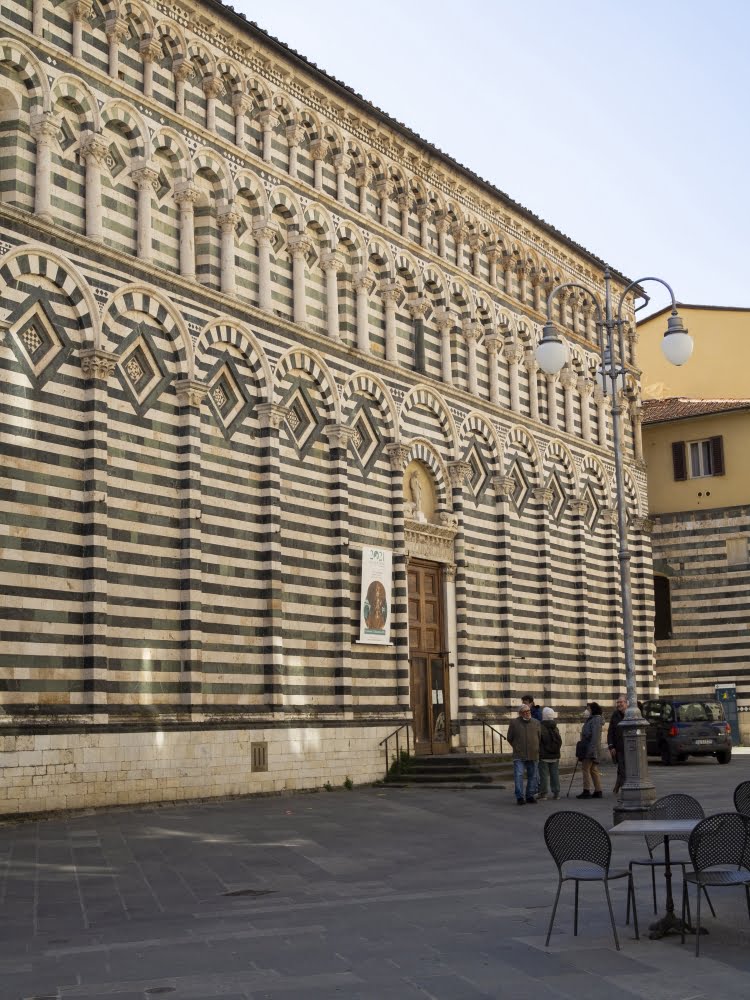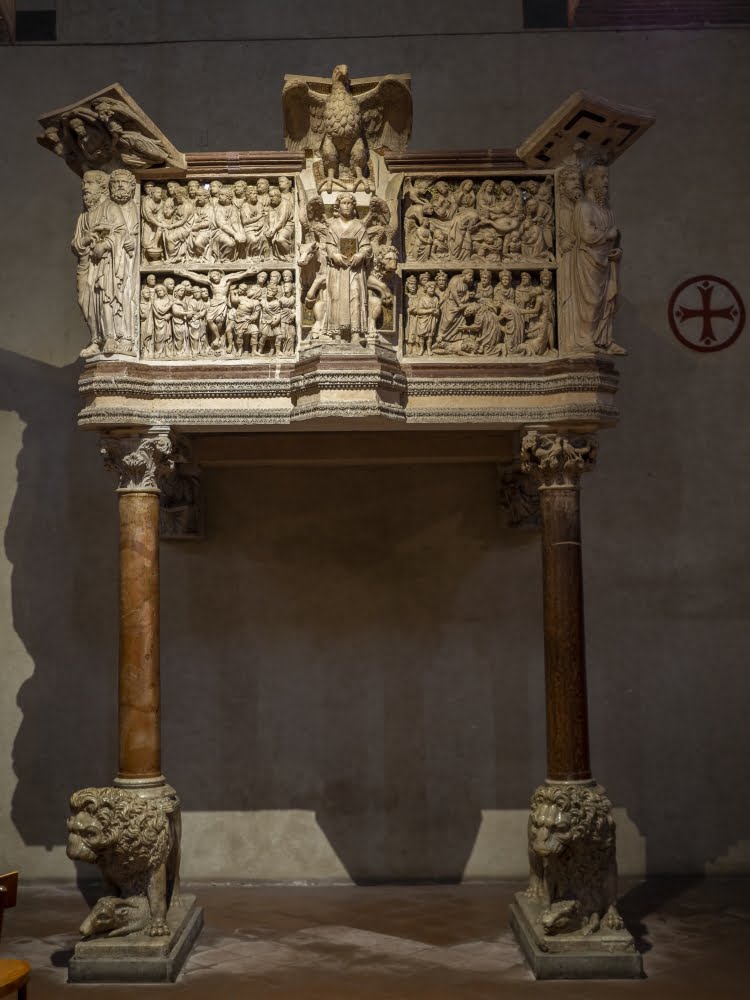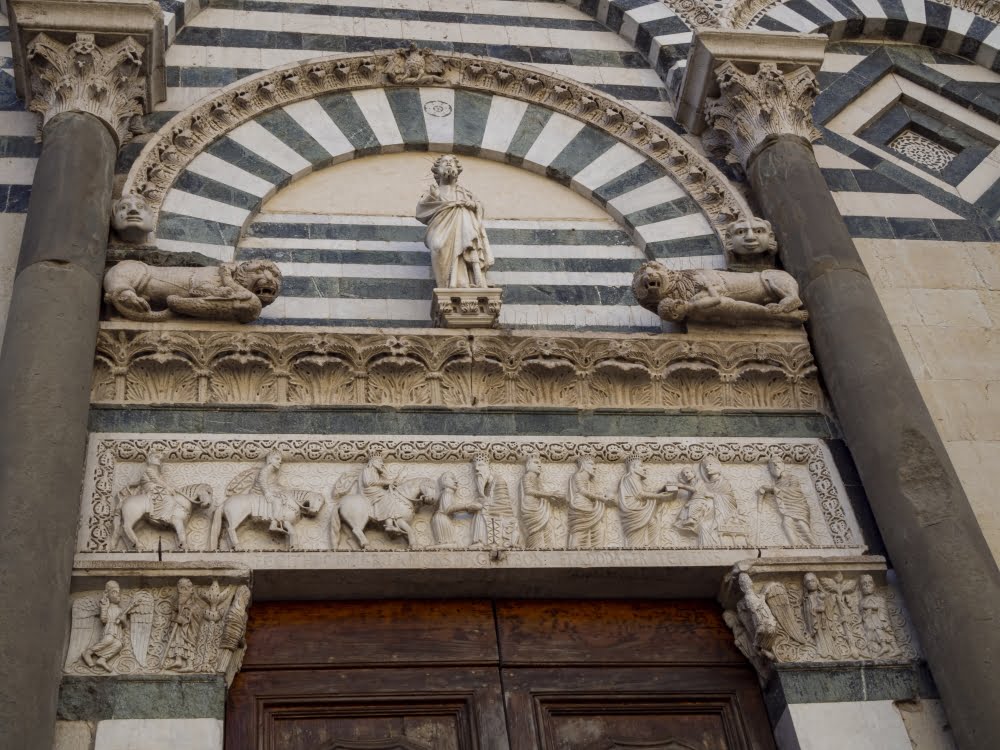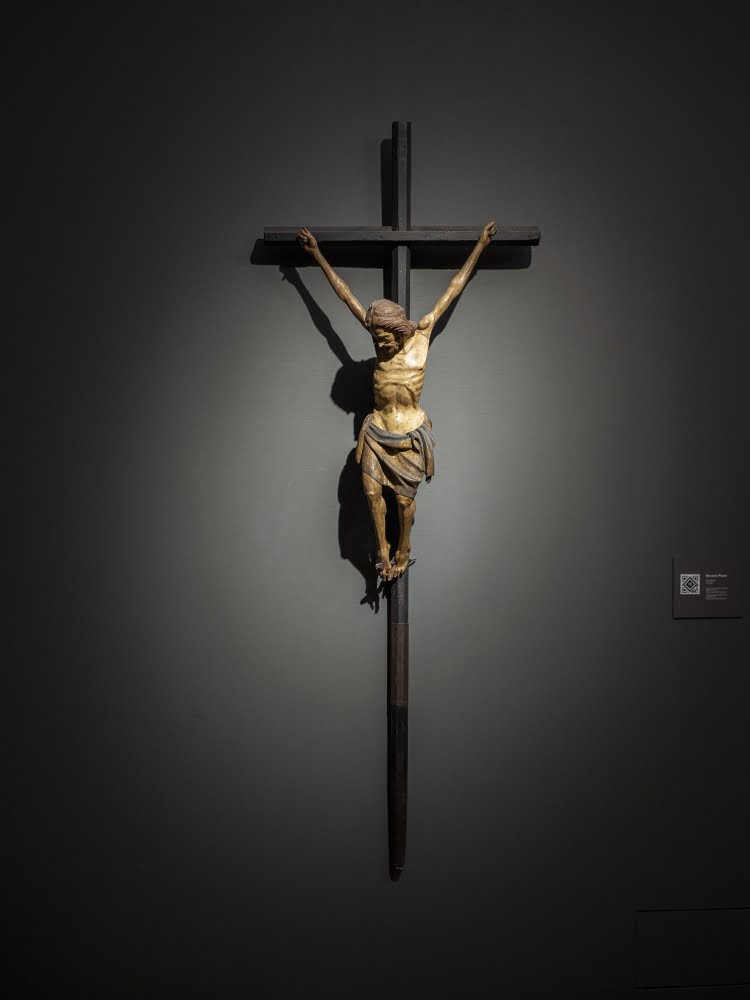- agata@guidemeflorence.com
- +39 348 135 1329
- Monday – Saturday 9 AM – 9 PM
a deep dive into the Middle Ages. A day trip from Florence
You are planning your Tuscan holidays and you don’t know where to go and what to see? Don’t worry, it is impossible to be bored in this wonderful region! There are always new places to discover! After Siena and Lucca, it’s time for me to take you on a day trip to Pistoia. If you love Middle Ages, local atmosphere with no crowds and excellent food, Pistoia is a place for you!
How to reach Pistoia?
Pistoia is located in Northern Tuscany, at the feet of the Apennine mountains. It is very well connected with Florence, Lucca, Viareggio and Pisa. You can reach the city by train. The train ride from Florence lasts 30 minutes and the ticket costs 4,70 €. You can check the schedule and buy your tickets on the Trenitalia website.
If you travel with your car, you can reach Pistoia with the A11 Firenze-mare and you can park at the Parcheggio Pertini. Remember that as a visitor, you can park only on the blue stripes and that you have to pay for the parking.
Middle Ages in Pistoia
Pistoia is one of the many medieval gems in Tuscany. As many Tuscan towns, also Pistoia has been inhabited already during the Etruscan era and then dominated by the Romans. After the period of decay following the fell of the Roman Empire, Pistoia started to grow again during the 10th century.

In 1117 newly proclaimed statutes defined the independence of the Commune of Pistoia. Since the very beginnings, however, Pistoia had to compete with Florence, which very early started to fight for domination in Northern Tuscany. In fact, Florence dominated Pistoia already in 1267 and this dependence continued, followed by conflicts and battles. It was reconfirmed by the unification of Tuscany under the Medicean Duchy during the 16th century.
Pistoia and the medieval pilgrimages
Around 1140 Pistoia received a particularly precious gift: a relic of Saint James, donated to the city by Archbishop Diego Gelmírez of Compostella. Thanks to this precious object the cult of Saint James grew in Pistoia and the city, just like the neighbouring Lucca, became an important destination for the medieval pilgrims.
The phenomenon of pilgrimages significantly enriched the European culture during the thirteenth and the fourteenth centuries. There were three most important religious sights which attracted thousands of pilgrims every year: Jerusalem with Jesus’ tomb; Rome and the tomb of Saint Peter; and Santiago de Compostella where, according to the legend, Jesus’ disciples buried Saint James, one of the twelve Apostles, killed in Judea by Herod Agrippa in 44 AD.
Imagine what a long distance travel could mean for a medieval man. Most people travelled on foot. Only the wealthy aristocrats or patricians could afford a horse. During the pilgrimage medieval travellers had to cross territories with different languages, different food cultures, climate and nature. Particularly long, dangerous and challenging was the trip to Jerusalem. It included a very risky sea travel, and allowed the European travellers a direct contact with the Muslim world.
The pilgrimages enriched not only the lucky ones who directly experience these fascinating travels. After the return to their home town, the pilgrims became some sort of “walking books”. Their endless stories about the distant countries, exotic animals, people and their habits, were shared with the community, first in the oral form and then also through written memories. The pilgrimages reinforced cultural exchange between the European territories and they contributed to a better understanding of the diversity of Europe.
Pistoia, with its relic of Saint James, became yet another spot the European pilgrims wanted to visit. The close distance to Lucca, and through that to Via Francigena, the pilgrims’ route to Rome, guaranteed influx of people, money and wealth to Pistoia.
San Zeno Cathedral and Saint James’ altar
The precious relic of Saint James has always been worshiped in the Cathedral of Pistoia dedicated to Saint Zeno. The first documentary sources mentioning the church date back to 923 AD. The arrival of the relic was an excuse for a re-embellishment of the cathedral, rebuilt in the Romanesque style influenced by the architecture of the nearby Pisa, during the 12th and the 13th centuries.

The most precious treasure of the Cathedral is the silver altar of Saint James, the symbol of richness and devotional relevance of Pistoia, originally kept in the Chapel of Saint James. The first frontal with the figure of the Virgin and the Apostles was commissioned in 1287. In 1293, during the carnival, a local aristocrat, belonging to the faction of the Black Guelfs, Vanni Fucci, entered the Cathedral with a group of rascals and plundered the chapel of Saint James damaging the silver altar.

The violation of the Cathedral’s sacrality was such a shock, that the event was lengthy talked of. The fame of Vanni Fucci brought him straight to Dante’s Inferno, were the poet placed him among the other thieves. Dante imagined a truly harsh punishment for Vanni who was found in a pit full of snakes. The snakes were bounding the hands of the sinners and were striking them at the back of their necks. The souls burst into flames, turned into ash, which fell onto the ground and reconstituted itself, starting the suffering from the beginning. Vanni interrogated by Dante said:
“A bestial life, and not a human, pleased me,
Even as the mule I was; I’m Vanni Fucci,
Beast, and Pistoia was my worthy den.”[…]
What thou demandest I cannot deny;
So low am I put down because I robbed
The sacristy of the fair ornaments,[…].”
At least in poetry Vanni was severely punished for his actions. After the theft, the silver altar was enlarged and redecorated. New silver panels were added during the 14th century and the works on the altar concluded only in 1457. The bas-reliefs decorating the altar tell the stories of the Old and the New Testament and the life of Saint James. At the centre you can admire the majestic figure of Saint James enthroned made by Giglio Pisano between 1349 and 1353.

The silver altar is not the only treasure preserved inside the Cathedral. In the church you can also admire the painted crucifix by the Florentine master Coppo di Marcovaldo and in the left nave, close to the entrance door, you can find the Funerary Monument in honour of Niccolò Fonteguerri, commissioned to Verrocchio in 1477 and finished by Gaetano Masoni during the 18th century.
The Baptistery
The Baptistery of Pistoia, dedicated to Saint John the Baptist, was built starting from 1337 and it substituted an ancient church of Santa Maria in Corte. Its octagonal structure is inspired by the Florentine Baptistery. The external decoration with the stripes of the green and the white marble and the coronation with a blind loggia refers to the baptistery in Pisa.

Inside you will find the baptismal font dating back to the 14th century. It can give you an idea on the medieval rituals of baptism, that included the full-body immersion. The adult catechumen were baptised sitting inside the baptismal font. In fact, inside you can see comfortable benches for them. In the corners of the marble frame of the font you can see, instead, the round openings, which were used during the baptism of small children. They were immersed in water vertically, in order to avoid the risk of drowning.
Coming to Florence?
Download my free guidebook “Art and the City. Two Squares in Five Masterpieces”!
San Giovanni Fuoricivitas
Located few steps from Piazza Duomo is the church of San Giovanni Fuoricivitas. Its external marble decoration with the stripes of the green and the white marble makes of this church one of the most iconic monuments of Pistoia.
The foundation of the church dates back to the Lombard age, but the present structure was built from the 11th century onwards.

It is worth visit the church inside as it hosts the marble pulpit sculpted by Guglielmo da Pisa in 1270. The rectangular structure of the pulpit is supported by the two columns posed on the back of the two lions.
The bas-reliefs decorating the pulpit represent the New Testament stories: Annunciation, Visitation, Nativity and Adoration of the Magi, Washing of feet, Crucifixion, Deposition, Descent into Limbo, Ascension, Pentecost and Dormition of the Virgin.

The compositions are still rather static. You will notice, however, that the figures are rendered almost three-dimensionally. The carving is very deep, which reinforce the compositions.
In the church you can also admire the beautiful font sculpted by Giovanni Pisano and the Visitation in glazed-terracotta by Luca della Robbia dating back to 1445.
Sant’Andrea
If you continue your walk, North of Piazza Duomo you will find the Romanesque church of Sant’Andrea. Established probably during the 8th century, the church is one of the most significant medieval treasures of Pistoia. The sculptural decoration of the 12th-century façade underlines the links between the city and the tradition of pilgrimages.

In fact, the central portal is decorated with the bas-reliefs representing the Magi and their fantastic travel towards Jerusalem. The narrative about the wise Kings, who crossed the continents in order to worship the newly-born ruler, was a powerful tale for a medieval man. It nourished the medieval imagination and contributed to the creation of the myth of pilgrimage. The bas-relief with the figures of the Magi was sculpted by the two brothers Gruamonte and Adeodato in 1166.

Inside the church you can admire the beautiful pulpit sculpted by Giovanni Pisano between 1298 and 1301. Its hexagonal structure is, just like in the pulpit by Guglielmo, supported by the column posing on the back of the lions. Also here the bas-reliefs narrate the New Testament stories: Annunciation and Nativity, Adoration of the Magi, Annunciation to Joseph, Slaughter of the Innocents, Crucifixion and Last Judgement.

In his compositions Pisano represented the events reinforcing the drama and trying to influence the spectators’ emotions. If you look at the scene representing the Slaughter of the Innocents, you will see the mothers fighting with the Roman soldiers and trying to protect their children. Their faces are deformed. The sculptor represented their fear and despair. The carving is very deep and the figures become almost fully three-dimensional. This pulpit truly is one of the greatest masterpieces of Gothic sculpture in Tuscany.
In the church you can also admire the two wooden crucifixes sculpted by Giovanni Pisano (until 8 May 2022 they are displayed at the Bishops’ Palace in Pistoia on the exhibition Middle Ages in Pistoia). The two crucifixes well represent the late-medieval tendency to emphasis Christ’s suffering during the passion.

Giovanni represented Christ’s body completely deformed. The muscles and the tendons become simple geometrical forms: balls and lines. Jesus’ feet are twisted and crooked. These details underlined Christ’s unhuman pain and the numerous tortures he suffered during the passion. The recollection of Jesus’ agony was one of the spiritual exercises advised by the medieval preachers. Giovanni’s crucifixes helped the believers to visualise the pain and the suffering.

Coming to Florence?
Download my free guidebook “Art and the City. Two Squares in Five Masterpieces”!
Chiesa di San Bartolomeo in Pantano

The Church of Saint Bartholomew is yet another medieval pearl in Pistoia. The first church rose here during the 8th century but the present temple dates back to 1159. Its Romanesque façade recalls the design of the Cathedral in Pisa, with the blind arcades and the geometrical composition under the arches. The portal is decorated with a relief representing the Redeemer with the Apostles.

Inside the church you will find another Romanesque pulpit. This one was sculpted in 1250 by Guido da Como. Its rectangular structure is supported by the columns placed on the back of the lions. If you look at the lions’ manes you will notice the schematical treatment of the hair. This work is definitely less realistic then Giovanni Pisano’s later compositions. The bas-reliefs represent the New Testament stories and they give visual form to the tells narrated by the priests from the pulpit itself.



